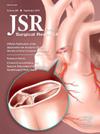A Randomized Control Trial Investigating the Effect of Different Treatment Strategies on Mitochondrial Function in Peripheral Arterial Disease-A Study Protocol
IF 1.8
3区 医学
Q2 SURGERY
引用次数: 0
Abstract
Peripheral arterial disease encompasses different clinical symptoms, depending on the severity of the disease. In early stages, a walking-induced pain, known as intermittent claudication, is the leading clinical symptom. Repeating cycles of ischemia and reperfusion induce a typical myopathy, with mitochondria playing the key role within this pathophysiological condition. The aim of this study is to further evaluate the effects of different treatment strategies on mitochondrial function and overall cardiovascular outcomes within a randomized controlled trial. After inclusion, patients will be randomized into different study groups. Study group 1 will receive conservative treatment, while study group 2 will receive revascularization of underlying atherosclerotic lesions. Additionally, a healthy control group will be included. Muscle biopsies will be obtained from ischemic and nonischemic muscle regions, being defined by the anatomic localization of the atherosclerotic lesion, before initiation of treatment as well as after a time interval of 12 wk. Mitochondrial function and content will be evaluated using high-resolution respirometry and citrate synthase activity measurements. Cardiovascular outcomes will be determined by established protocols. This study is registered on ClinicalTrials.gov–NCT05644158. This study aims to gain further insights into the exact pathophysiological mechanism underlying mitochondrial dysfunction in peripheral arterial disease. The potential effects of mitochondrial regeneration within ischemic muscle regions following a conservative treatment approach will be compared to those reported after revascularization procedures. Additionally, correlation with cardiovascular outcome parameters and in vivo methods will provide a comprehensive approach to this research question.
求助全文
约1分钟内获得全文
求助全文
来源期刊
CiteScore
3.90
自引率
4.50%
发文量
627
审稿时长
138 days
期刊介绍:
The Journal of Surgical Research: Clinical and Laboratory Investigation publishes original articles concerned with clinical and laboratory investigations relevant to surgical practice and teaching. The journal emphasizes reports of clinical investigations or fundamental research bearing directly on surgical management that will be of general interest to a broad range of surgeons and surgical researchers. The articles presented need not have been the products of surgeons or of surgical laboratories.
The Journal of Surgical Research also features review articles and special articles relating to educational, research, or social issues of interest to the academic surgical community.

 求助内容:
求助内容: 应助结果提醒方式:
应助结果提醒方式:


